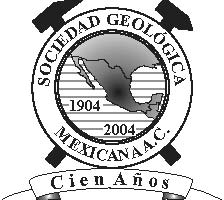|
BOLETÍN DE LA SOCIEDAD GEOLÓGICA MEXICANA VOL. 59, NÚM:. 1, 2007, p. 133-145 http://dx.doi.org/10.18268/BSGM2007v59n1a11 |
 |
Los tepetates y su dinámica sobre la degradación y el riesgo ambiental: el caso del Glacis de Buenavista, Morelos
Jorge Gama-Castro1,*, Elizabeth Solleiro-Rebolledo1, David Flores-Román1, Sergey Sedov1, Héctor Cabadas-Báez2, Jaime Díaz-Ortega2
1 Instituto de Geología, Universidad Nacional Autónoma de México, Ciudad Universitaria 04510, México, D.F.
2 Posgrado en Ciencias de la Tierra, Universidad Nacional Autónoma de México,Ciudad Universitaria 04510, México, D.F.
*This email address is being protected from spambots. You need JavaScript enabled to view it.
Abstract
The name tepetate refers to indurated horizons, compacted or cemented, that are found in Mexican volcanic landscapes, underlaying soils or outcropping in the surface. These horizons represent an element that participates actively in the environmental dynamic, because of their characteristics (high density, low porosity, hydraulic conductivity, water holding capacity and poor fertility). These layers represent a problem in agriculture because its hardness difficults tillage and their remediation is expensive. Tepetates under soils produce lithological discontinuities that can generate landslides and erosion, because they block water infiltration, favoring lateral run off. Another environmental hazard is the limited aquifer recharge. In this paper a general overview of the tepetates and formation processes is presented, providing results from a study case in the Glacis de Buenavista, Morelos, but that are very common in the pediments of volcanic landscapes. In this area tepetates are related to clayey soils, both easily recognizable by their spectral signature in Landsat images, representing a methodology that can be used easily.
Keywords: tepetates, degradation, environmental hazard, remediation, Glacis de Buenavista.

